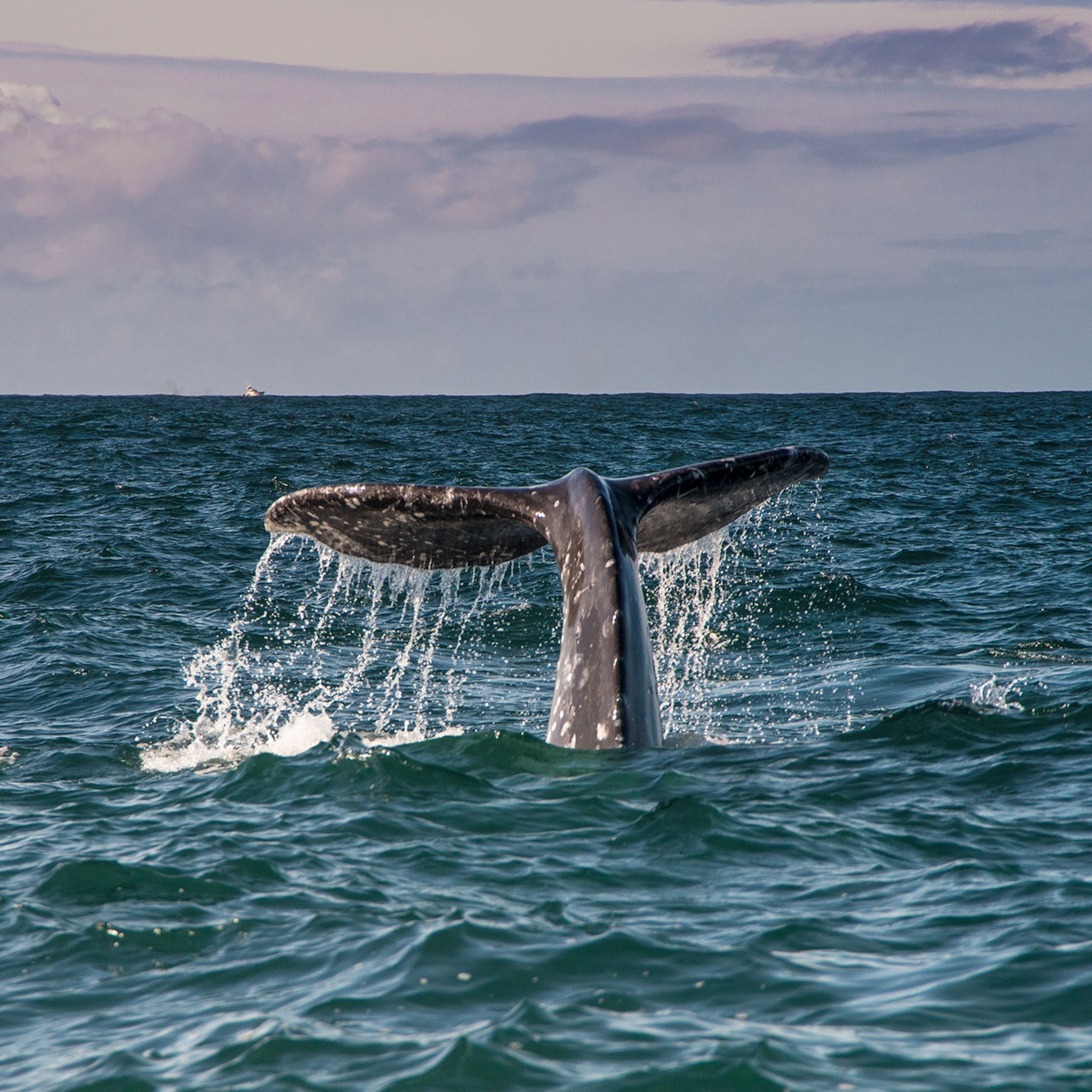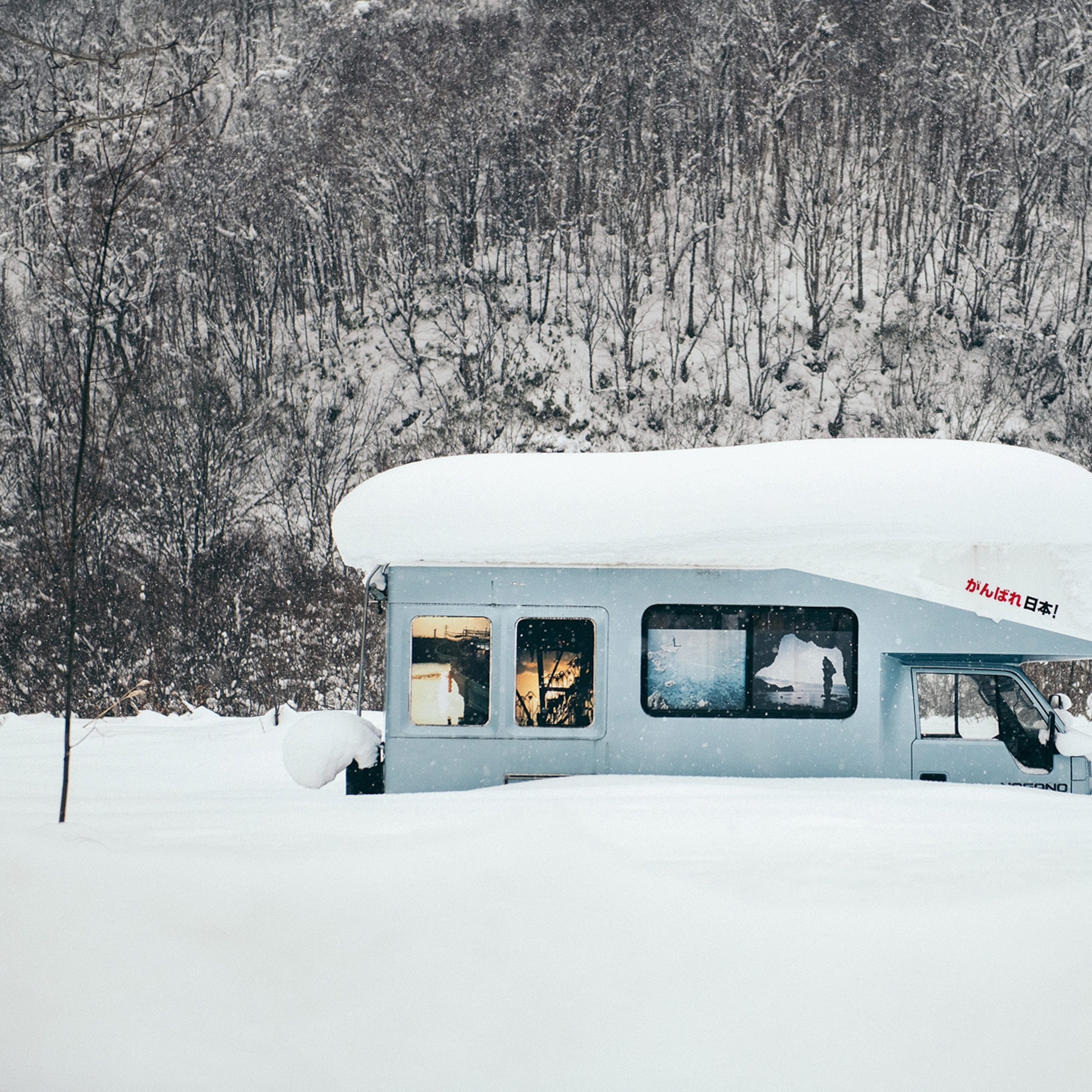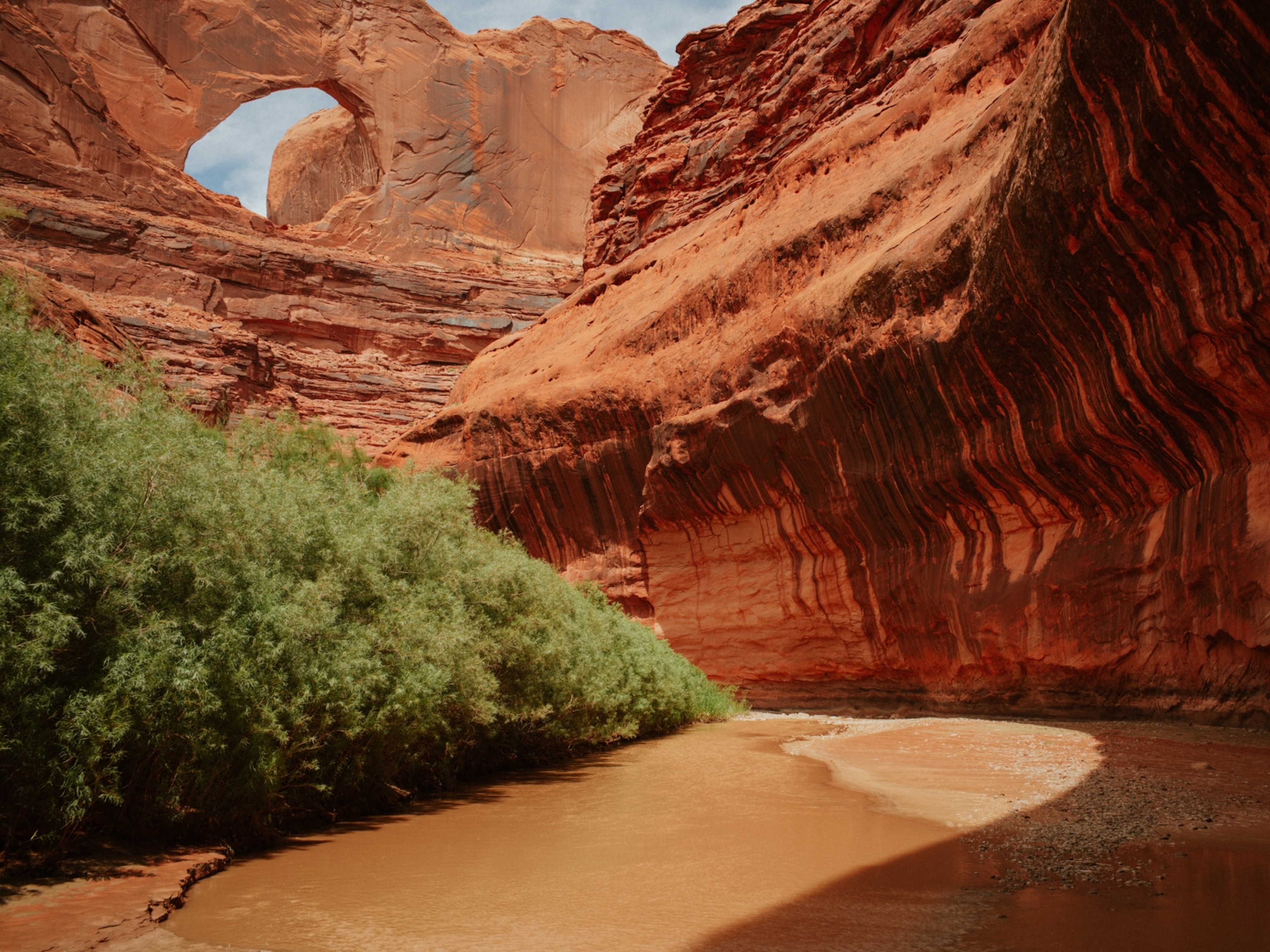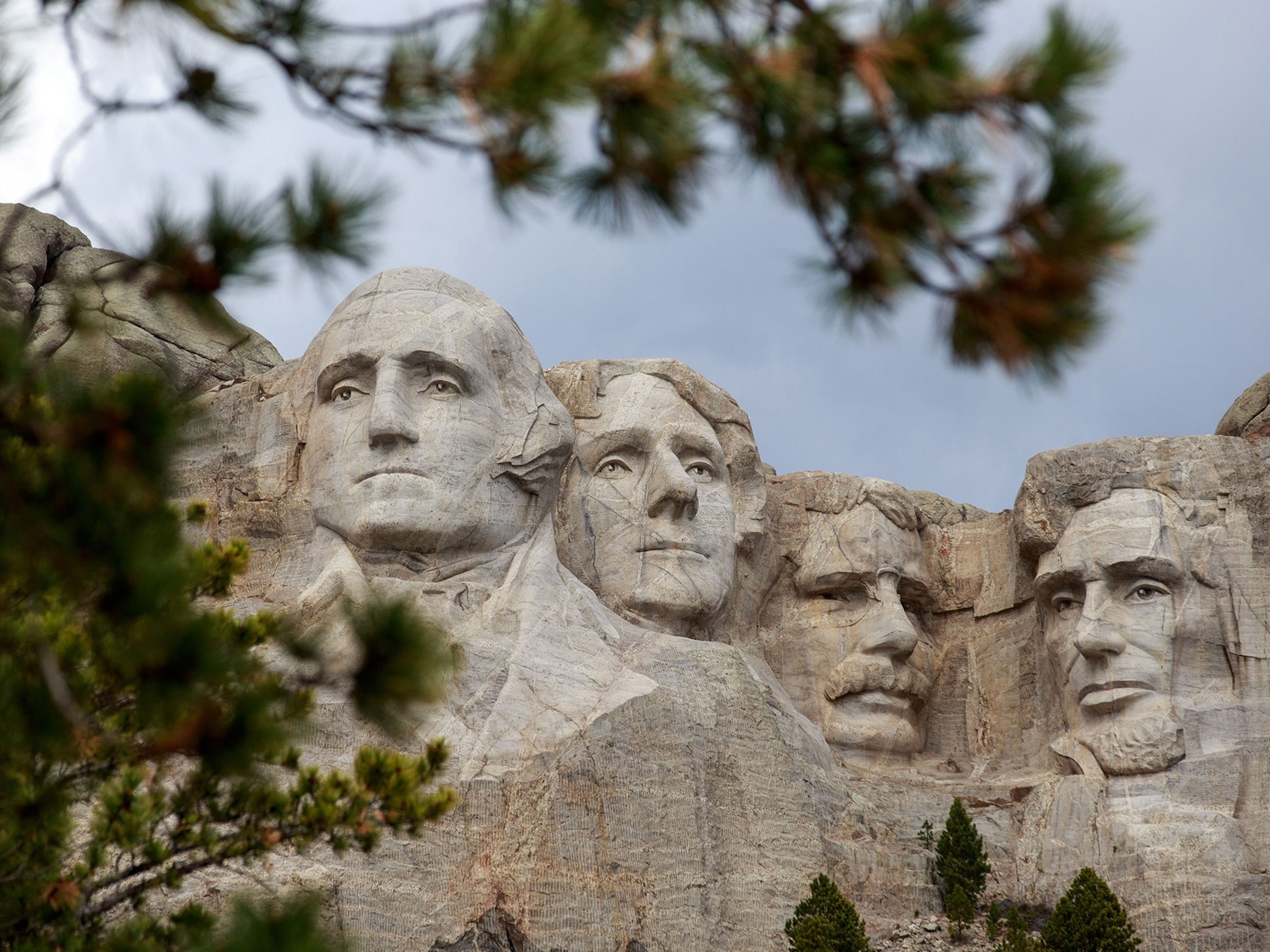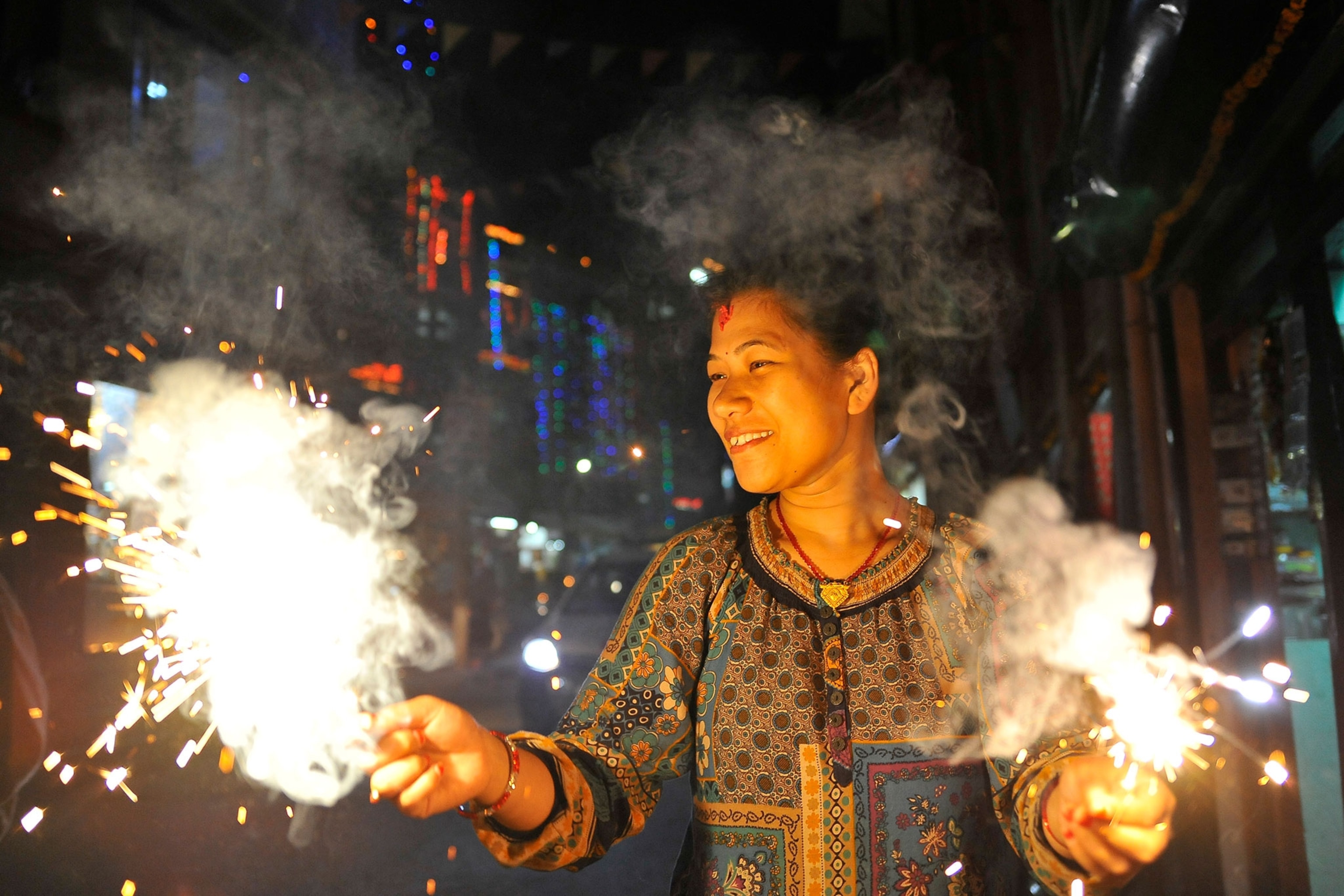
This unique Diwali celebration helps protect nature in Nepal
The festival of lights with this tribe offers a unique cultural experience and helps bolster conservation efforts.
The Bollywood beats pumped from a sound system all afternoon and reverberated against the clay-and-grass houses in Bhangaha, a village next to Nepal’s Chitwan National Park. During my visit in October 2017 on the third day of Diwali, the five-day Hindu festival of lights, my guide Sanjay Mahato, a 35-year-old waiter at the nearby Meghauli Serai resort, led a small group of travelers toward the music in his hometown’s dusty square. There, a throng of local Tharu women in saris shook silver tharya bracelets as they danced. Historically, the village staged this event so unmarried women could court eligible bachelors, but these days, it’s just a joyous holiday party—all cascading hands and thumping bass.
The Tharu are an indigenous group in the foothills of the Himalaya with the majority of the population living in Nepal’s Terai, a lowland region that spans the southern part of the country and spills into northern India. For centuries, they have lived in the area that became Chitwan National Park, established in 1973.
Protecting the parks and wildlife that live there is increasingly important. That's because amid Nepal's spate of recent setbacks in the last two decades, it's had fewer resources to devote to these conservation efforts: most of the royal family was murdered in 2001, and since its civil war ended in 2008, Nepal has transitioned from a monarchy to a parliamentary republic with great difficulty. And, of course, the 2015 earthquake devastated the country’s infrastructure and wreaked costly damage in its wake, leaving fewer funds allocated to conservation. Poachers often try to capitalize on vulnerable moments amid economic and political uncertainty to hunt for ivory, and monitoring from local tribes becomes all the more vital.
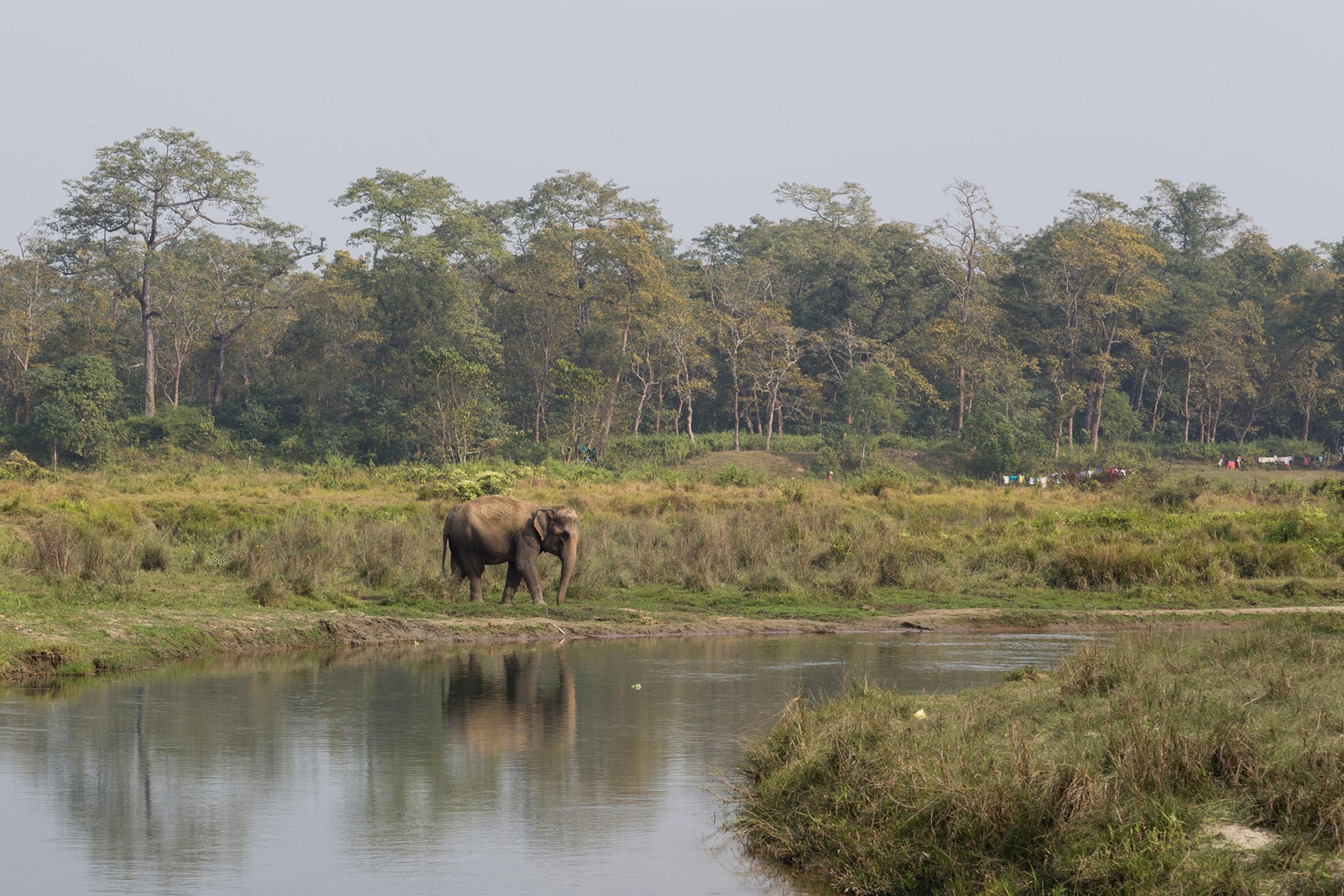
Diwali—known as Tihar or Deepavali in greater Nepal and as Sohari to the Tharu—presents a prime opportunity to experience the Tharu traditions and commemorate the triumph of good over evil. Meghauli Serai, a Taj Safari Lodge that leads game drives with luxury travel company andBeyond in Chitwan, arranges these village visits to join the Tharu festive fanfare. And there’s an added bonus: As poaching and conservation challenges mount in Nepal, these activities support a community engaged in conservation efforts to protect the area’s Bengal tigers and Indian rhinos.
After a group of Malaysian tourists joined in hip-shaking thumkas with Mahato’s mother, 68-year-old Bikani Tharuni, and the other villagers, Mahato brought us to see his father at the family homestead. Hari Prasad Mahato, a 70-year-old village patriarch, greeted me with the traditional offering of raksi (rice wine), popcorn, and cigarettes. Some also give chocolates for the holiday and add brightly colored kolam powder to the mandalas at their doorsteps.
The Nepalis honor the crow on the festival’s first day, the dog on its second, and the cow on the morning of the third, but soon the villagers gathered as the music blared to hold a puja for Lakshmi, the Hindu goddess of wealth and true star of Diwali’s third day. The villagers placed rupees on a round woven basket that had an offering of rice, flowers, an apple, and candles and waited for the revelry to begin that evening.
Though the Tharus' lifestyle is modest, their prayer for prosperity has slowly but surely been answered. Up until 2000, the tribe was part of a bonded labor system called Kamaiya. Now, conservation authorities, along with Meghauli Serai and andBeyond, rely on the Tharu tribe to monitor the Community Forest, the buffer zone between Chitwan and surrounding Bharatpur—an especially vital service amid recent rhino poaching incidents. They financially reward the Tharu for their efforts, and the bounty allows the tribe to improve its farming productivity and lifestyle.
- National Geographic Expeditions
“We work together with local communities like the Tharu—support them in their livelihood needs and involve them in conservation activities,” said Siddhartha Bajra Bajracharya, executive director of the National Trust for Nature Conservation in Nepal. In turn, he said, the Tharu then have more resources to devote themselves to conservation efforts.
Joss Kent, CEO of andBeyond, said support for local people like the Tharu and the successful preservation of their surrounding environment are “inextricably intertwined.” Participating in the myriad andBeyond safari activities at Meghauli Serai further assists the Tharu, who make up the majority of the resort’s employees.
One afternoon, my wife, Tiffan, and I rafted with naturalist Maan Kumar down the Rapti River, which flows down to the Ganges, to spot the rhinos he calls “chubby unicorns” and gharials (large crocs). The sunset matched the amber of Gorkha Strong beer in my glass, and the ice-capped Himalayan peak of Manaslu lurked behind us. And on a dawn jeep drive through Chitwan, we saw Tarai gray langurs and barking deer—along with fresh Bengal tiger tracks. Though we enjoyed the wildlife experiences, our time celebrating the Tharu proved just as memorable.
The evening of our village visit, families adorned their homes with diyas (oil lanterns) and moved from doorstep to doorstep, reciting traditional Tharu songs—“Bhailo” for girls and “Deusi” for boys (think caroling with a tip). Back at the resort, we rejoined Mahato and dined on lamb, dal bhat, and doughnutlike sel roti. Tiffan and I lit our own diya and placed it on the giant mandala at the center of a circle of guest tables. Soon men dressed in warrior robes used bamboo sticks to pantomime combat in elaborate choreography called thakara. The holiday occurs on the darkest night of the Hindu lunisolar month of Kartika, but the Tharu brought a luminescence to the remote Terai. Suddenly, Mahato appeared at our table with his sister, who pulled us up to dance around the mandala with a group of Tharu women who taught us some basic steps. Mahato cheered as the world spun around us in a warm glow.
Know Before You Go
Meghauli Serai is an easy 20-minute flight from Kathmandu Tribhuvan (KTM) to Bharatpur (BHR) on Buddha Air or Yeti Airlines for about $200 round-trip. Diwali dates vary each year, but the holiday typically occurs between mid-October and mid-November. Make sure you book your arrangements ahead, as this festive time is the high season. Various outfitters offer elephant rides and other elephant interactions with mahouts. These kinds of wildlife interactions are controversial and highly discouraged by animal rights activists.
